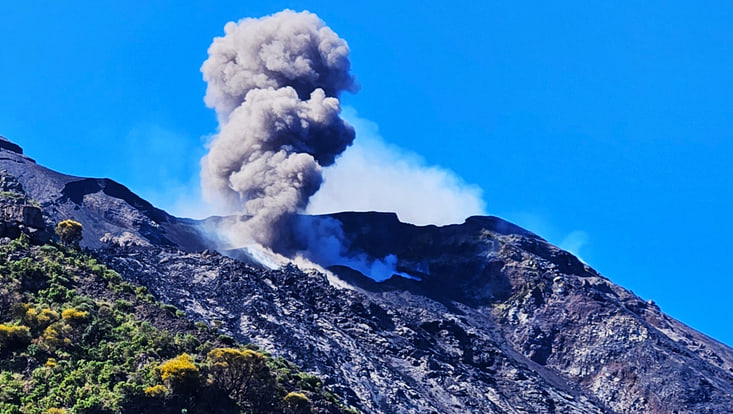Plant roots increase greenhouse gas emissions from permafrost soils
20 July 2020, by Press release/ editorial office

Photo: Ive van Krunkelsven
How much carbon is released when permafrost soils thaw in the Arctic? Climate models cannot yet reliably predict this. An international research team has now investigated the role of plant roots. They release so-called exudates into the soil and thus accelerate the growth of microbes, which in turn accelerate the decomposition of soil organic matter. This positive feedback mechanism is known as the priming effect. The results show that by 2100 this effect alone can release 40 billion tonnes of carbon from soils affected by permafrost. Professor Christian Beer from the Center for Earth System Research and Sustainability (CEN) at Universität Hamburg was involved in the study.
Permafrost is a permanently frozen ground, in which as much carbon is stored as in all plants and in the atmosphere together. The surface of the permafrost thaws in summer, the plants grow and organisms in the soil become active. When microorganisms breathe, they emit greenhouse gases. Until now, scientists have assumed that global warming could release 50 to 100 billion tonnes of permafrost carbon by 2100. On top of that, plant roots feed sugar to the microorganisms in the soil. The microbes use this sugar to break down more soil organic matter. The new study shows that this priming effect additionally increases emissions.
“We have known about the priming effect since the 1950’s, but we did not know whether or not this small-scale ecological interaction had a significant impact on the global carbon cycle”, says Research Scientist Frida Keuper, affiliated with the French National Research Institute for Agriculture, Food and Environment, INRAE, and with Umeå University, Sweden.
The team of researchers combined maps of plant activity and data on soil carbon content from the Northern Circumpolar Soil Carbon Database with an extensive literature survey on priming and plant root properties, to estimate the priming effect in permafrost ecosystems and its influence on greenhouse gas emissions.

"We have calculated that the priming effect increases the microbial respiration of the soil by 12 percent", says Prof. Christian Beer from CEN. "This means about 40 billion tons more carbon than previous calculations indicate by 2100. An enormous amount." If global warming is to be limited to a maximum of 1.5 degrees Celsius, this corresponds to 20 percent of the total remaining carbon budget, which may at most be released into the atmosphere.
"These new findings demonstrate how important it is to consider small-scale ecological interactions, such as the priming effect, in global greenhouse gas emission modelling", says Birgit Wild, Assistant Professor at Stockholm University.
Further Information
Publication
Frida Keuper, Birgit Wild, Matti Kummu, Christian Beer, Gesche Blume-Werry, Sébastien Fontaine, Konstantin Gavazov, Norman Gentsch, Georg Guggenberger, Gustaf Hugelius, Mika Jalava, Charles Koven, Eveline J. Krab, Peter Kuhry, Sylvain Monteux, Andreas Richter, Tanvir Shahzad, James T. Weedon, Ellen Dorrepaal (2020): Carbon loss from northern circumpolar permafrost soils amplified by rhizosphere priming, Nature Geoscience, DOI: 10.1038/s41561-020-0607-0
Contact
Prof. Christian Beer
Institute of Soil Science
Universität Hamburg
CEN – Center for Earth System Research and Sustainability
Tel.: +49 40 42838-2699
E-Mail: Christian.Beer@uni-hamburg.de


